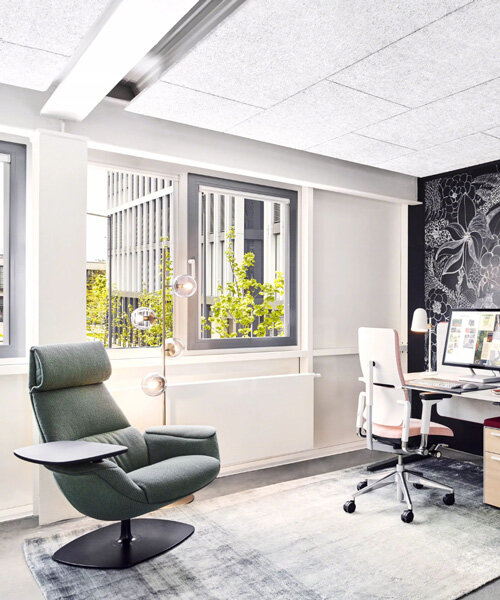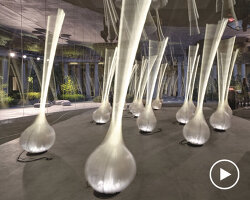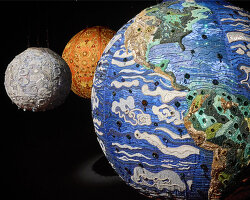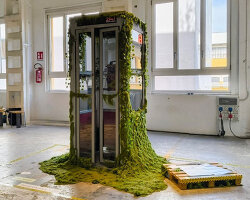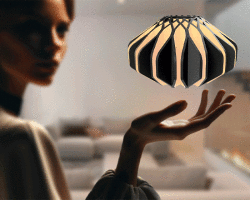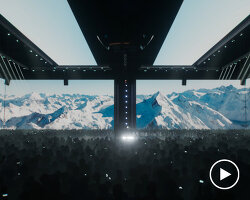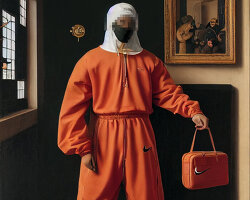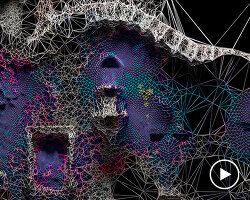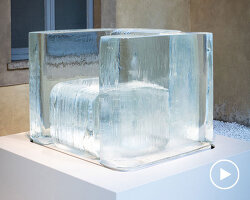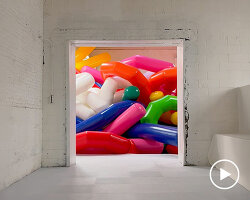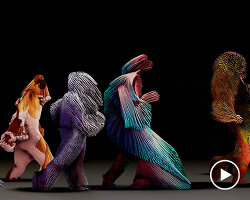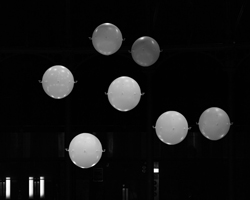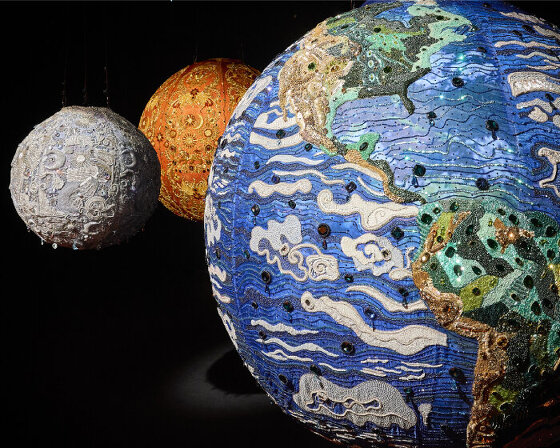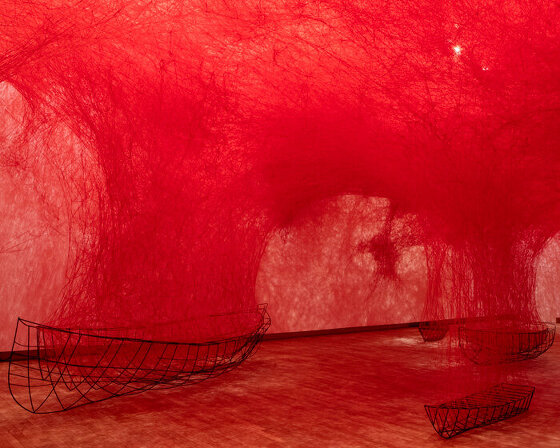random international on taking over scorpios bodrum
Post-digital art group Random International expands its two-decade-long quest for public co-creation with a triptych installation at the newly-opened Scorpios Bodrum, emerging from a hilly site along Turkey’s coast. Dubbed When Tomorrow Comes, the artwork finds shelter inside a cathedral-like and skylit room as part of The Ritual Space, an exclusive wellness hub where hotel guests can enjoy mind-tingling sessions. Inside the room, ‘the overall atmosphere is like an ‘open arm’ gesture, inviting you to step in and explore,’ Random International’s co-founder Hannes Koch tells designboom.
When Tomorrow Comes is likened to a virtual swarm, featuring different breeds of an evolving digital organism. Each breed, derived from a generative algorithm, presents distinct qualities and traits expressed solely through movement, forming Motherflocks. The interactive installation is commissioned for Scorpios’ 2024 Encounters Program and features a meditative track by Japanese composer Masahiro Hiramoto, further embuing it with an understated sacredeness. Collectors can also choose from three sets of 150 signed, limited edition prints all paired with a unique animation.
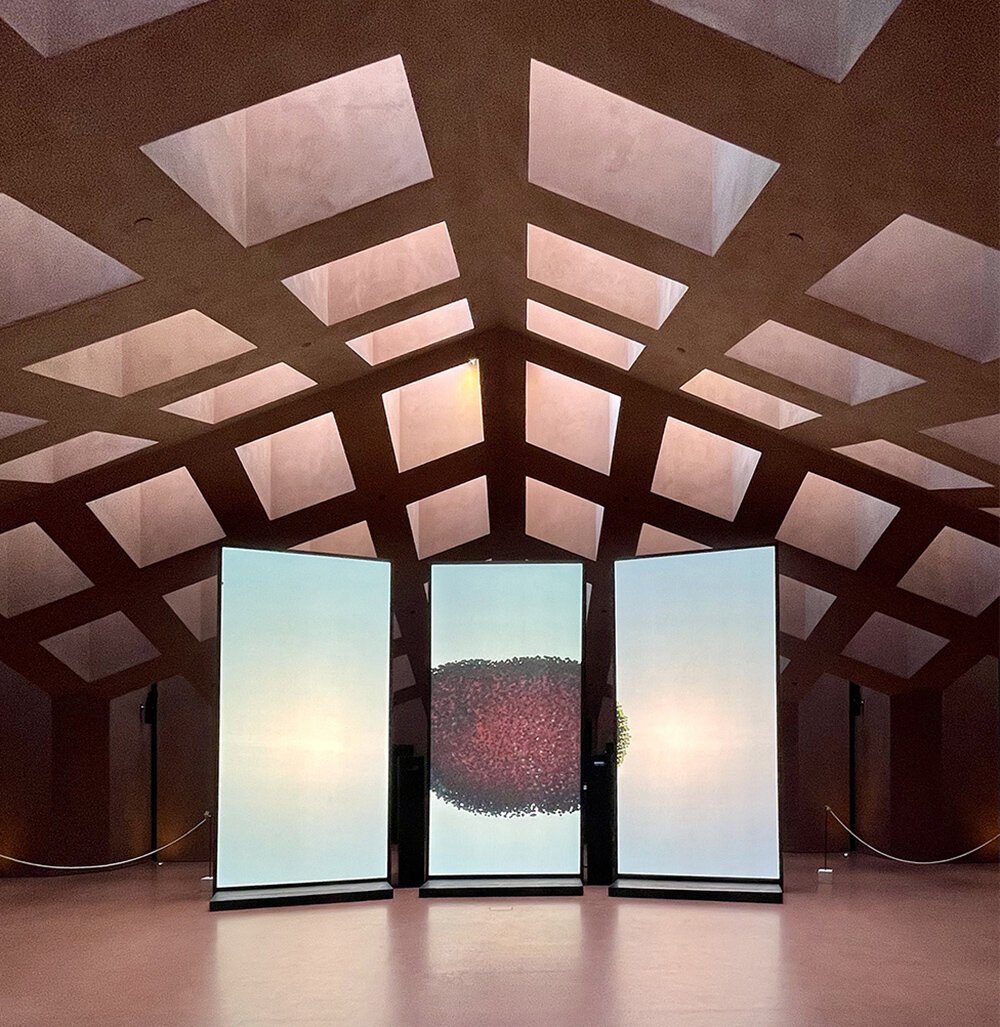
image © designboom
a digital swarm with new possibilities of co-creation
For Hannes Koch, the triptych installation, curated by HOFA Gallery at the Scorpios Bodrum retreat, offers a methodology for collective ownership of public art and brings the digital into the physical sphere, inviting viewers to interact with it in ways that open up new possibilities of co-creation while conjuring an almost sentient, collective intelligence. The artist adds: ‘Whatever we see in these collective movements, in these swarming, flocking algorithms, we humans, across cultures, tend to think there’s some emerging consciousness, some life-like behavior.’ On this occasion, designboom sat with Koch who decoded the digital swarm, traced the studio’s fascination with flocking algorithms, and pondered on the art of ritualistic spaces. Read the full interview below.
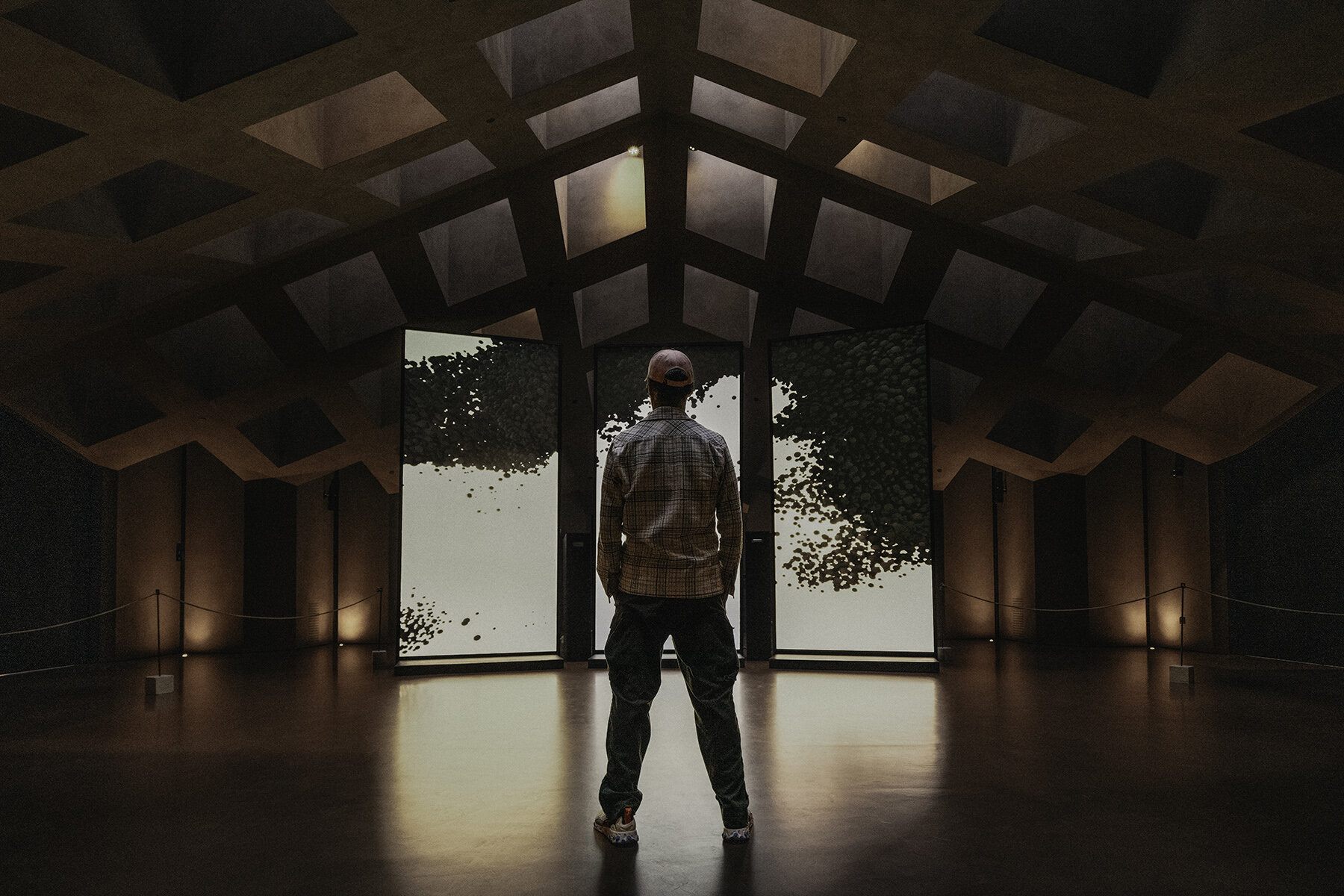
image courtesy Scorpios Bodrum
interview with co-founder hannes koch
designboom (DB): Walk us through the concept behind the triptych at Scorpios Bodrum.
Hannes Koch (HK): When Tomorrow Comes is part of a larger body of work titled Life in Our Minds. It describes the human propensity to assign meaning to moving things and build an emotional relationship with them because we think they’re alive. Whatever we see in these collective movements, in these swarming, flocking algorithms, we humans, across cultures, tend to think there’s some emerging consciousness, some life-like behavior, but the outcome is just ones and zeros. It’s not alive; all the qualities we assign to it happen in our head; our instincts and emotional perception of the world drive this inclination. We’ve been fascinated with swarming and flocking for the last twenty years in various ways.
Aesthetically, there’s a fascination with the efficiency and the reductive qualities of the movements found in nature. The installation is self-organized. It’s only a simulation of nature, yet you still get a whiff of this magic somehow. Of course, you can never be as awesome as nature. I think it’s an entirely futile attempt; we know we will never get to the same depth and the same quality and the same magic, but I think it’s still worth trying by simulating these things in ways we can control and in ways that we can amplify them for human consumption.
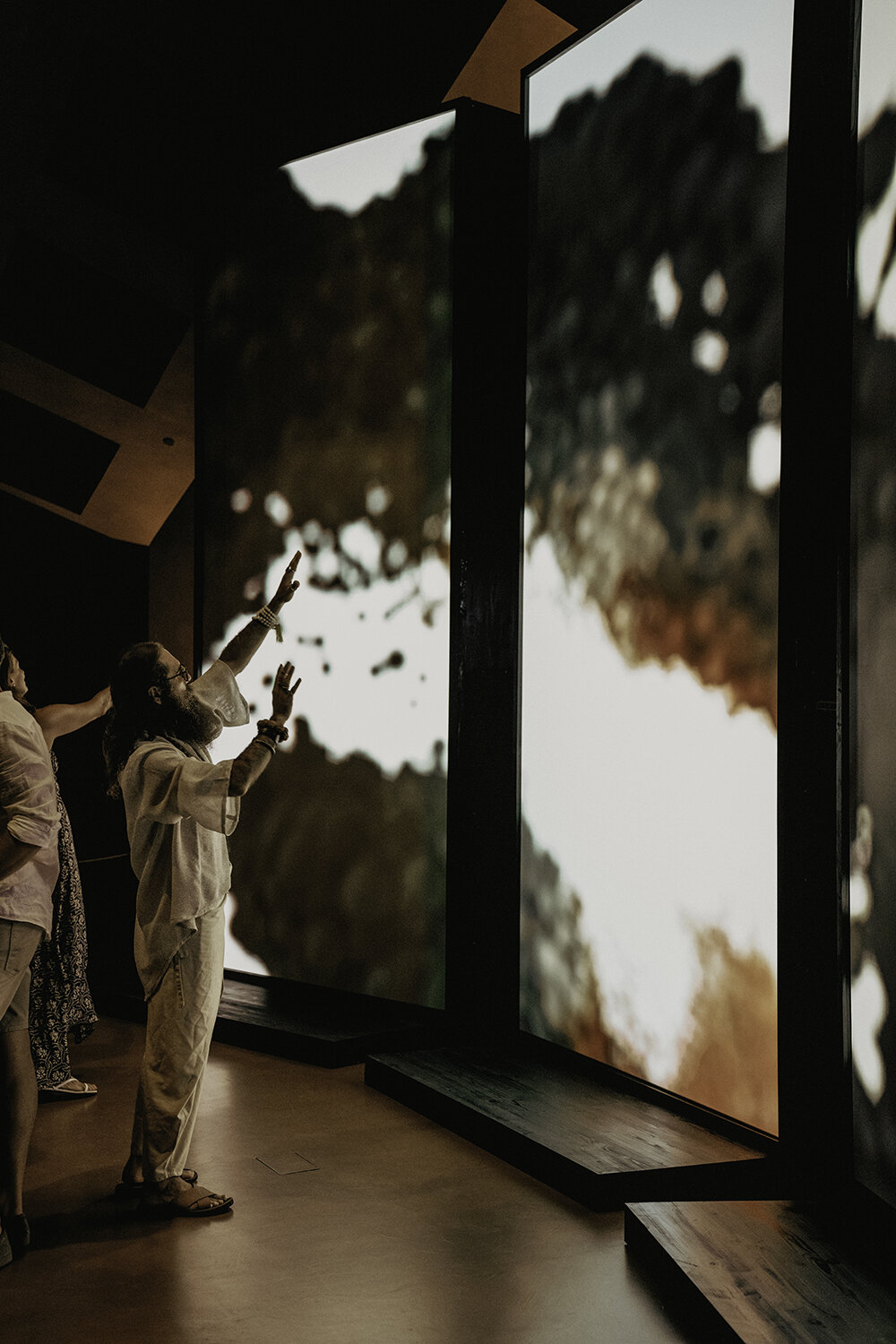
opening night | image courtesy Scorpios Bodrum
HK: That’s sort of the broad context of the installation— a fascination with collective behavior and all its facets and for all kinds of different species. Then, we focus on what happens to us as human viewers, how we open up emotionally when we think our counterpart is alive. We believe it brings out vulnerability. If something, an entity, has only to move as if it were alive to make us believe it’s alive, then that makes us vulnerable. Because only when it’s alive can we build a relationship with it. We open up towards it. We trust it. We start engaging with it emotionally even if it presents different goals, a widely different agenda, and potentially an alien quality. And we think that’s super interesting; it’s neither good nor bad. It’s something we are paying attention to. It fascinates us.
Beyond the decorative layer — bringing color into this digital swarm, playing with it, and making it visually attractive — we felt compelled to push the boundaries in a weird way. We asked ourselves: How strange can something be and still be read by us, by the viewer, as being alive or having some form of connection? I think that’s something we’re going to start exploring much more as a species now that we’re breeding AIs, which will be embedded in moving bits and pieces in the next ten or fifteen years, in robotics. We’re already on that path, and it’s interesting to ask those questions and to see what happens if something behaves naturally, in a way familiar to us and in a way we can trust. This exploration opens the door to vulnerability, which I think is imprinted in us as humans. It’s important to go there and see what happens.
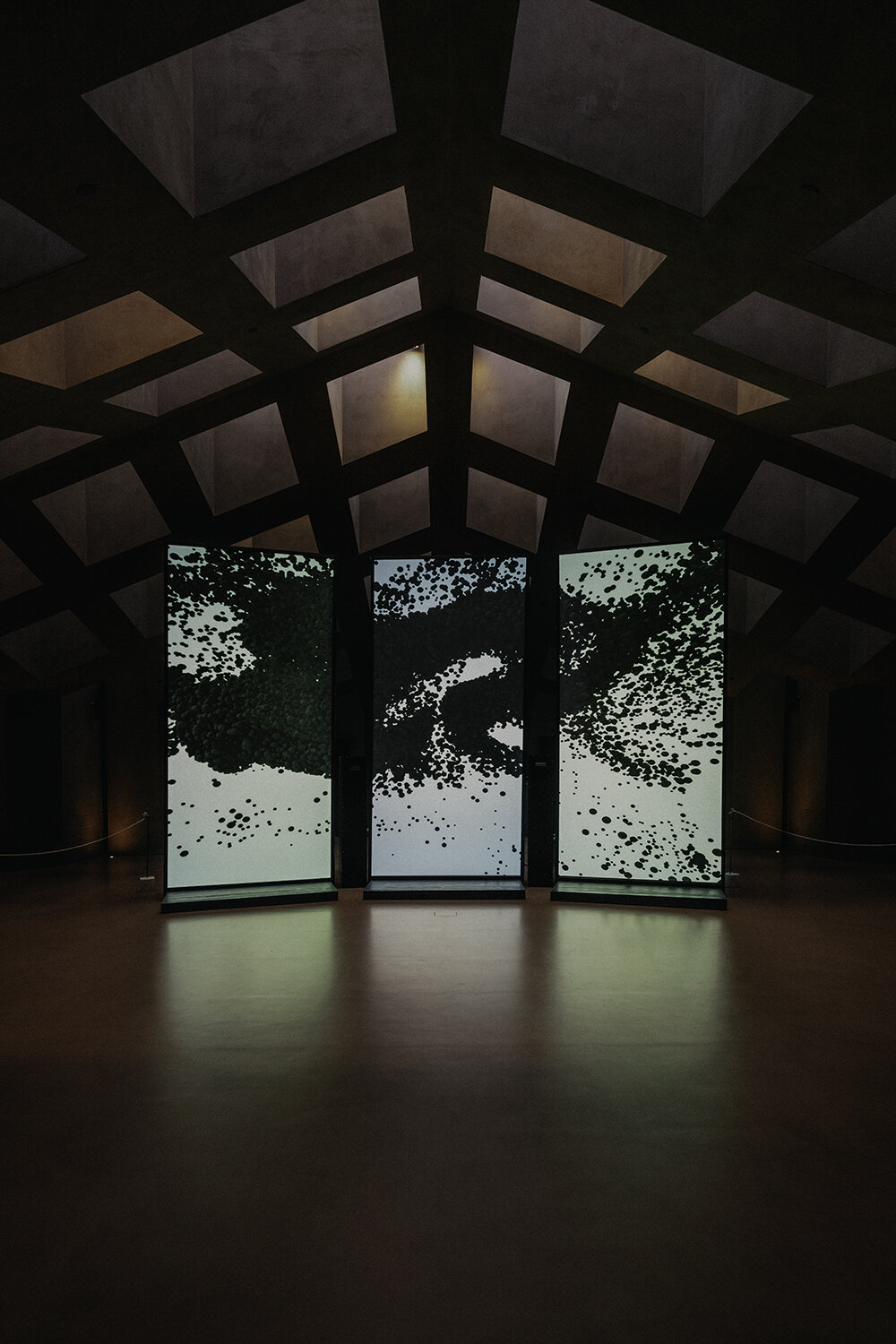
opening night | image courtesy Scorpios Bodrum
DB: You likened The Ritual Space to a cathedral at the opening night. Can you elaborate on that idea? And would you say your work hints at spirituality and sacredness?
HK: I think there’s a void at the moment. This discussion about immersive art, this need to enter the artistic realm with our full body, is not new. Just look at the Sistine Chapel; it has nothing to do with technology. I think there’s a gross misconception, especially when it comes to projection, which is strange. It has much more to do with how our content is delivered.
This may not be the case in countries like Italy and Spain, but people don’t really go to cathedrals anymore. We don’t assemble in those spaces. We’re not exposed to that visual and emotional richness in our everyday life because we lack spirituality. It’s being replaced by either late-stage capitalist beliefs, or by science, or both. There’s nothing intimate and unconditional about this, not anywhere near as much as there used to be. I’m not nostalgic about spaces like cathedrals, but I think there is a reason why they used to play a significant role in different cultures. Something in our human condition makes it essential for us to expose ourselves to such sacred spaces.
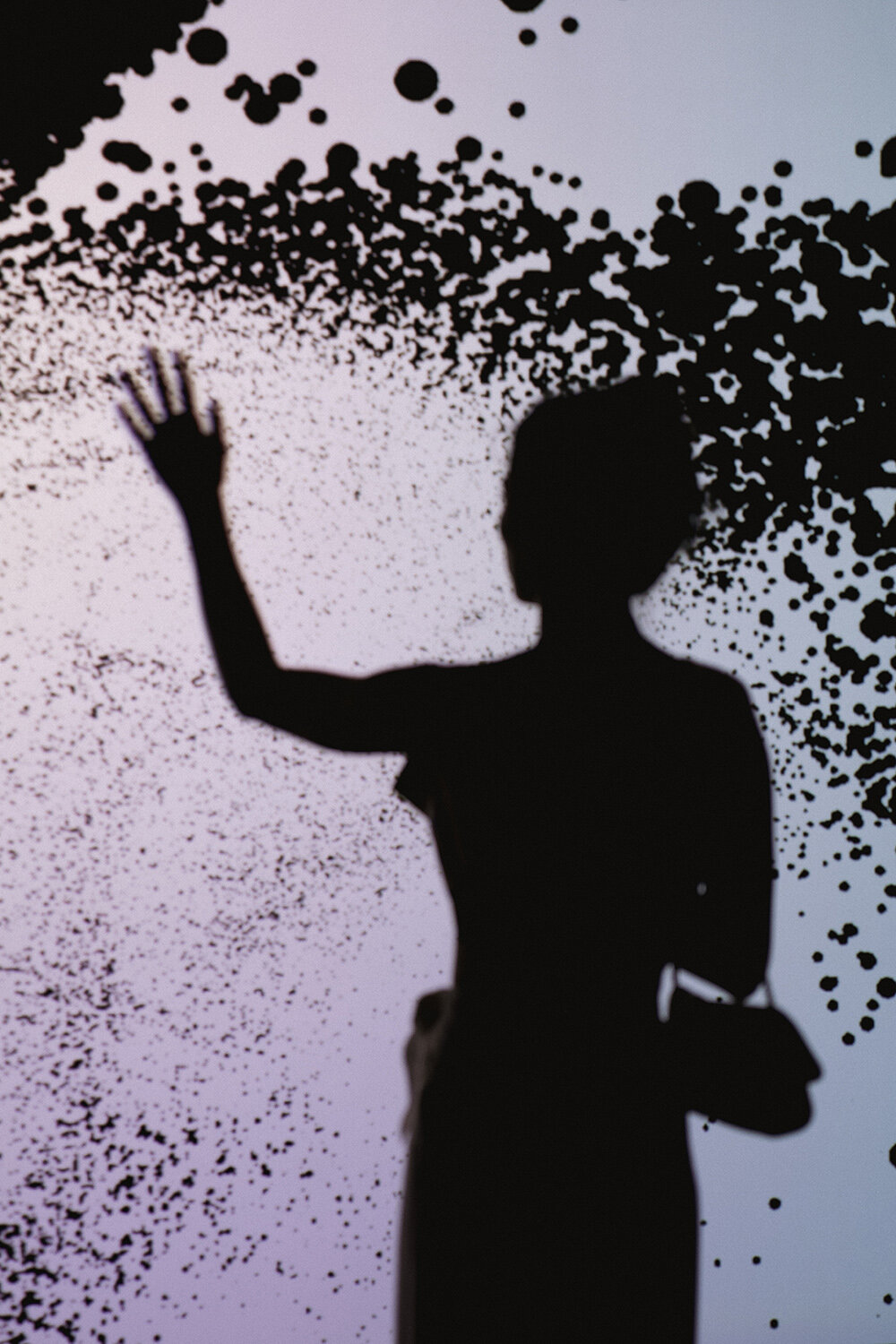
image courtesy Scorpios Bodrum
HK: Now, the triptych form is entirely unreligious; we like interrupting an image. It’s a fundamental and instinctive aesthetic decision. And when we saw The Ritual Space, we were drawn by its very interrupted ceiling through which heaven comes down. There is something very powerful about this element. The overall atmosphere is like an ‘open arm’ gesture, inviting you to step in and explore. And we had only seen a photograph of the space. We immediately said yes because there is something special about presenting your work in a ritualistic context.
I prefer this to something like Burning Man ten out of ten times. This space has an understatedness in how there is nothing else that distracts, and it goes great with a triptych design, which gives the work a much more sculptural presence. We don’t like the flatness of projections. We prefer bringing in the human body, an inherently three-dimensional, physical presence that echoes these large, exaggerated, and back-projected screens. And the projected quality of the image is much more gentle on the eye. We don’t really like LCD screens that get excessively brighter the closer you move toward them.
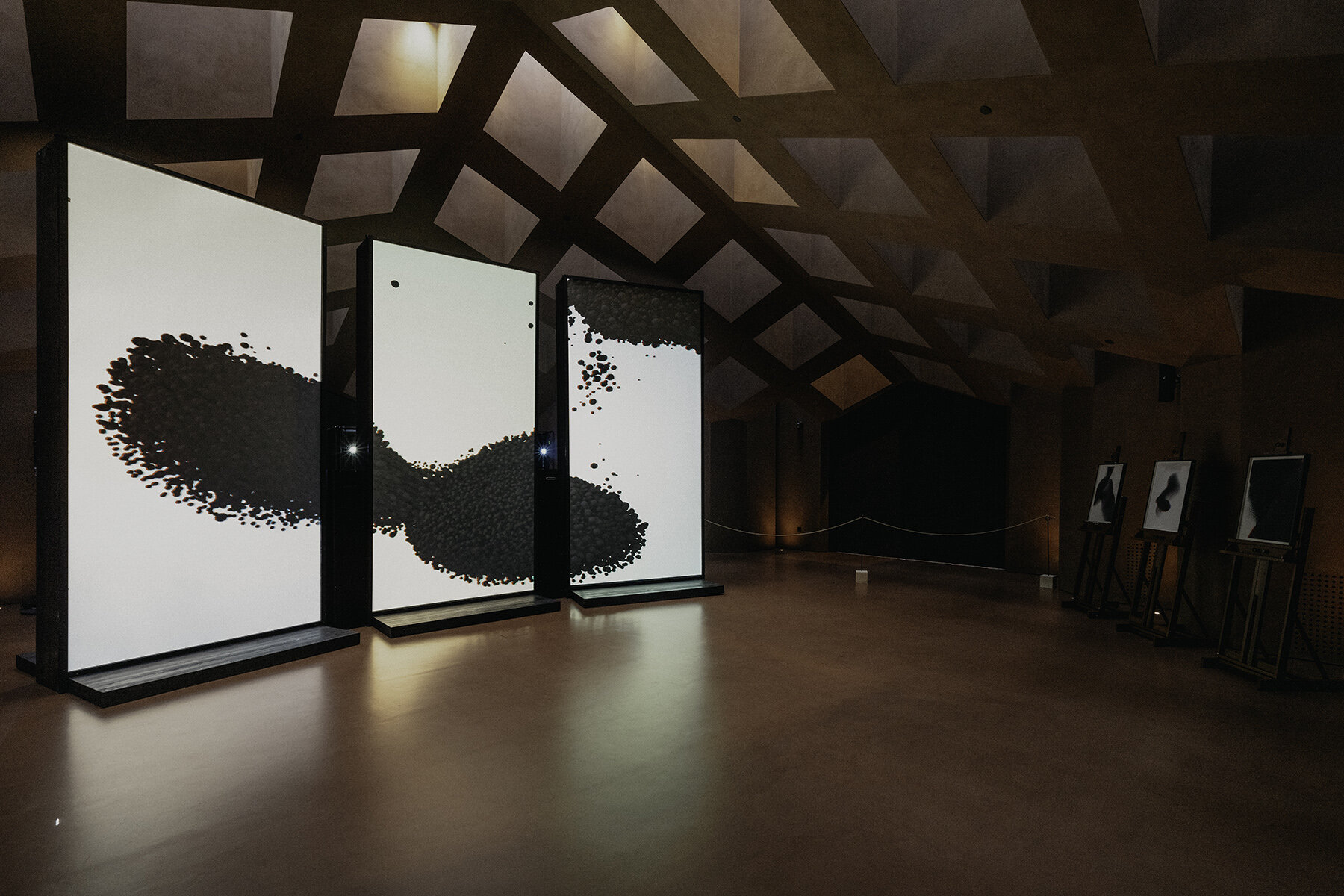
image courtesy Scorpios Bodrum
HK: We discussed this with a German curator and journalist called Georg Dietz. We informed him of our plans to develop an iteration of our artistic practice, which is more concerned with the delivery. We want to build a center where we can be very specific about how the work is presented to audiences, not so much as a monument to ourselves, which we find is not so interesting. Based on twenty years of doing immersive art, we know exactly what we want to play with and how we want to try it. We want to open this up to other artists. We’re planning on developing a prototype in Stockholm next year. It is a borderline entertaining attempt to fill a void created by not going to church and ceasing to explore our inner worlds. Being on the screen, in front of a phone, is not your inner world.
We’ve got this obsession at Random International to insert the human being in the work, to plan the work into your mind and your instinct. To build a solid relationship with the work. Still, one must be careful not to become pretentious about this kind of discourse. Ten out of ten times, I would prefer to immerse people in that kind of ritualistic space, as opposed to a black box, which I find is super damaging to the soul. Ambient light and open architecture are the way to go.
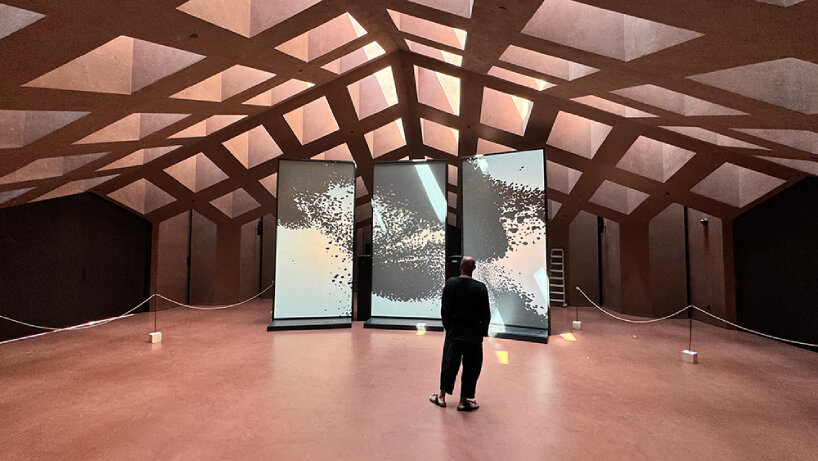
image © Random International
DB: Ritualistic spaces invite you to be in touch with the body, to be present. That’s how I felt when I engaged with your digital swarm. There was a strong urge to focus on my movements and anticipate what came next. What feedback or impressions do you usually get from audiences who interact with the artworks? Do they typically align with your initial objectives?
HK: I think they’re always aligned with the objective because the objective is not a prescribed experience. The purpose is for them to be in that experience. We never found the word for that objective. Our work incorporates an unconditional quality; it doesn’t ask anything of you. It’s up to you what you make of it. The unconditional moment is something that allows for that to happen. That is the point: to create that moment. We’re quite fond of making you use your body because that draws you in. You make all sorts of weird assumptions about why something behaves like it does. And then you move and start playing: you come home into your body. Your physical presence impacts how the art unfolds in front of you, inside of you, in your mind. What happens then is wildly beyond our control.
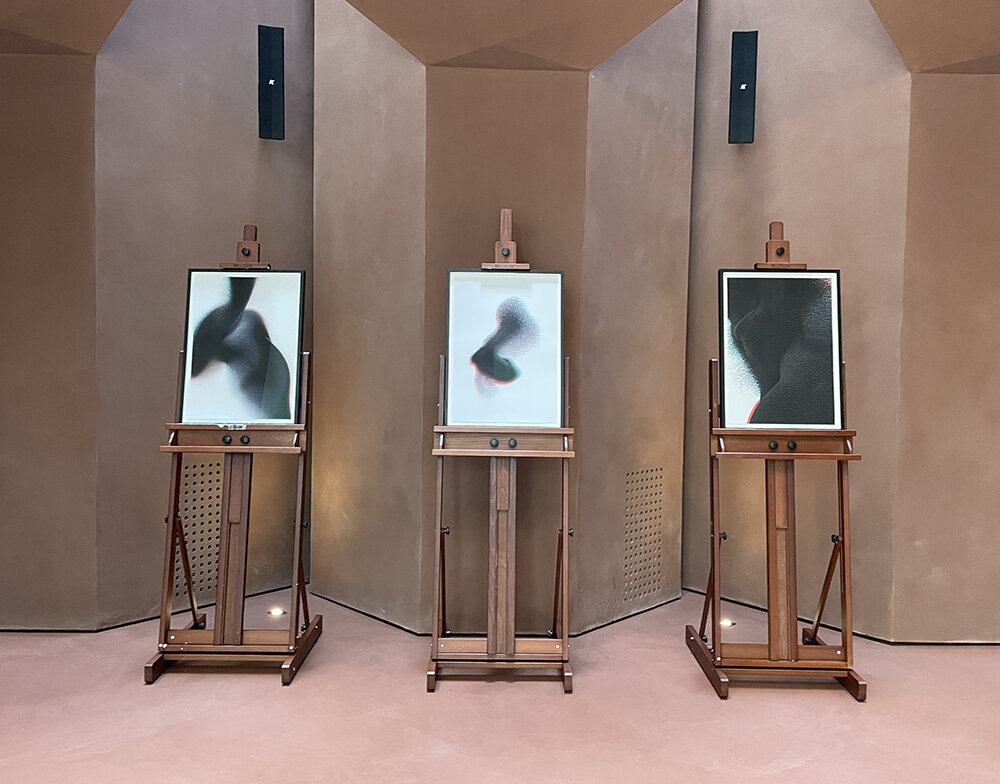
limited edition prints | image © designboom
DB: Do people ever experience any discomfort or unease?
HK: Definitely, and I think that’s very valid. There is probably a very narrow way of delivering this experience, which means that, for many audiences, what we do doesn’t click with them. There is a certain loudness that you need to achieve visually to get through to people, and it’s extraordinary. I think kids are the best. They have a full bandwidth of human propensity to think of something, to experience something. In the creation process, we intend neither comfort nor discomfort.
I felt this with The Living Room, one of our large-scale and immersive light installations, which could be described as strange. You get caught up in it; it has a slightly claustrophobic vibe because you are trapped in this narcissistic prison of light that is set very tightly around. It follows you everywhere. And this feeling is important; it amplifies something that is there anyway, in many situations in our modern life. I personally love discomfort and weirdness because we often restrain ourselves from going there. Life is full of cognitive, emotional, and precognitive dissonance, so we’re well advised to reflect this condition in our art and the world.
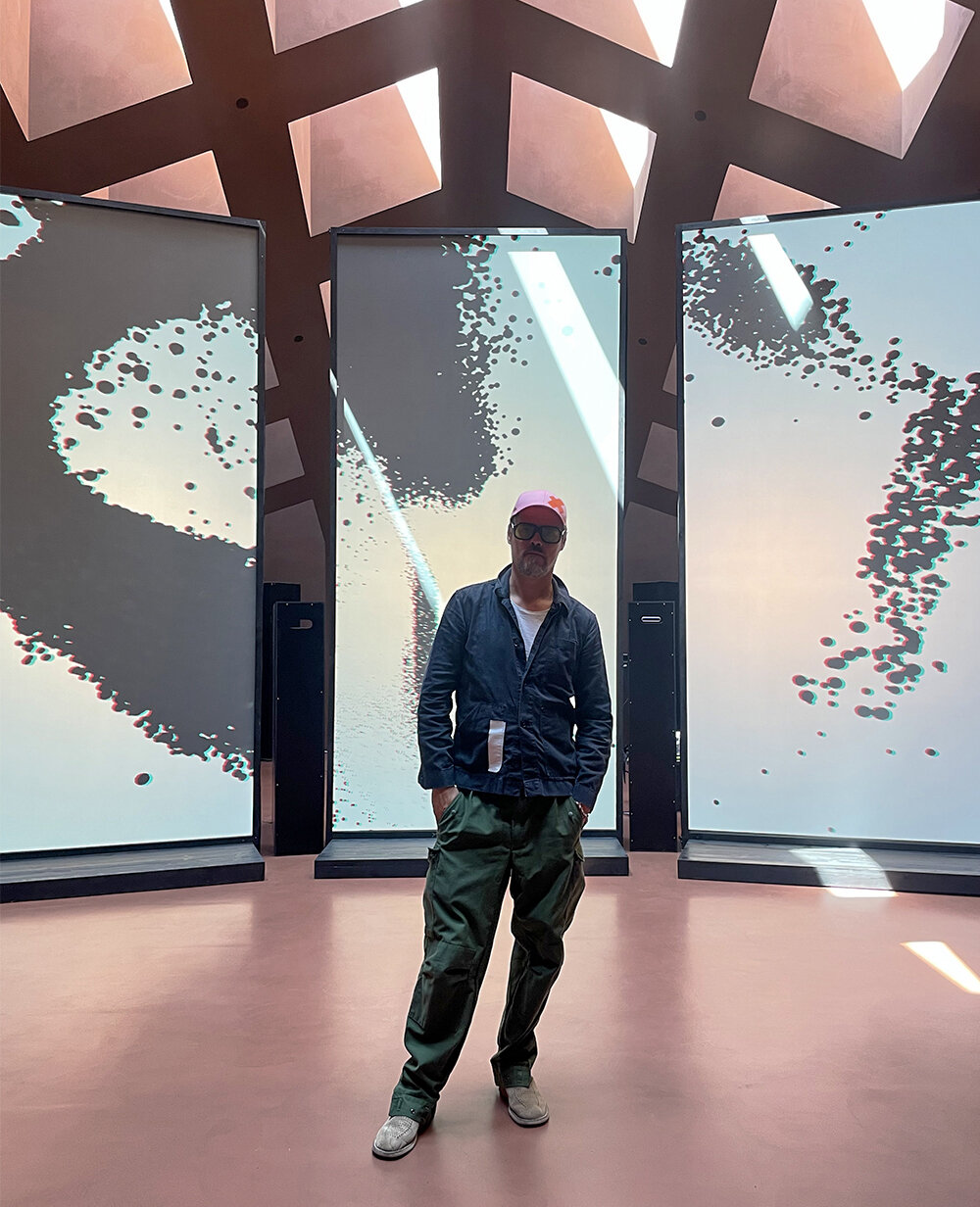
Hannes Koch, co-founder of Random International | image © designboom
DB: With a context like Scorpios Bodrum, a wellness-infused retreat, do you see your work becoming part of a collective healing practice? Could restorative qualities be assigned to your generative algorithms, despite the unconditional attributes attached to them?
HK: I believe that art has a huge role to play in healing societies, and I think that’s something we’re collectively working on now at Random International. We’re opening this up to people who have worked with us closely but are not part of the art-making. We are building an artist-led institution that offers a vision wholly different from any profit-driven, immersive art venture. It’s not a narcissistic monument to our unique creativity; it’s a conduit for encouraging and celebrating shared creativity and the shared act of creation. We have very concrete ideas on how to kickstart this project but are happy to let it unfold on its own, eventually. Art is hugely important as a form of communication among each other and with ourselves — as a monologue, and as a dialogue that is nondidactic, nonverbal, and noncerebral. It’s things you can experience together without having to think about it. For us, it’s a form of therapy. While partly self-serving, art triggers in us an obligation to make it accessible and shareable.
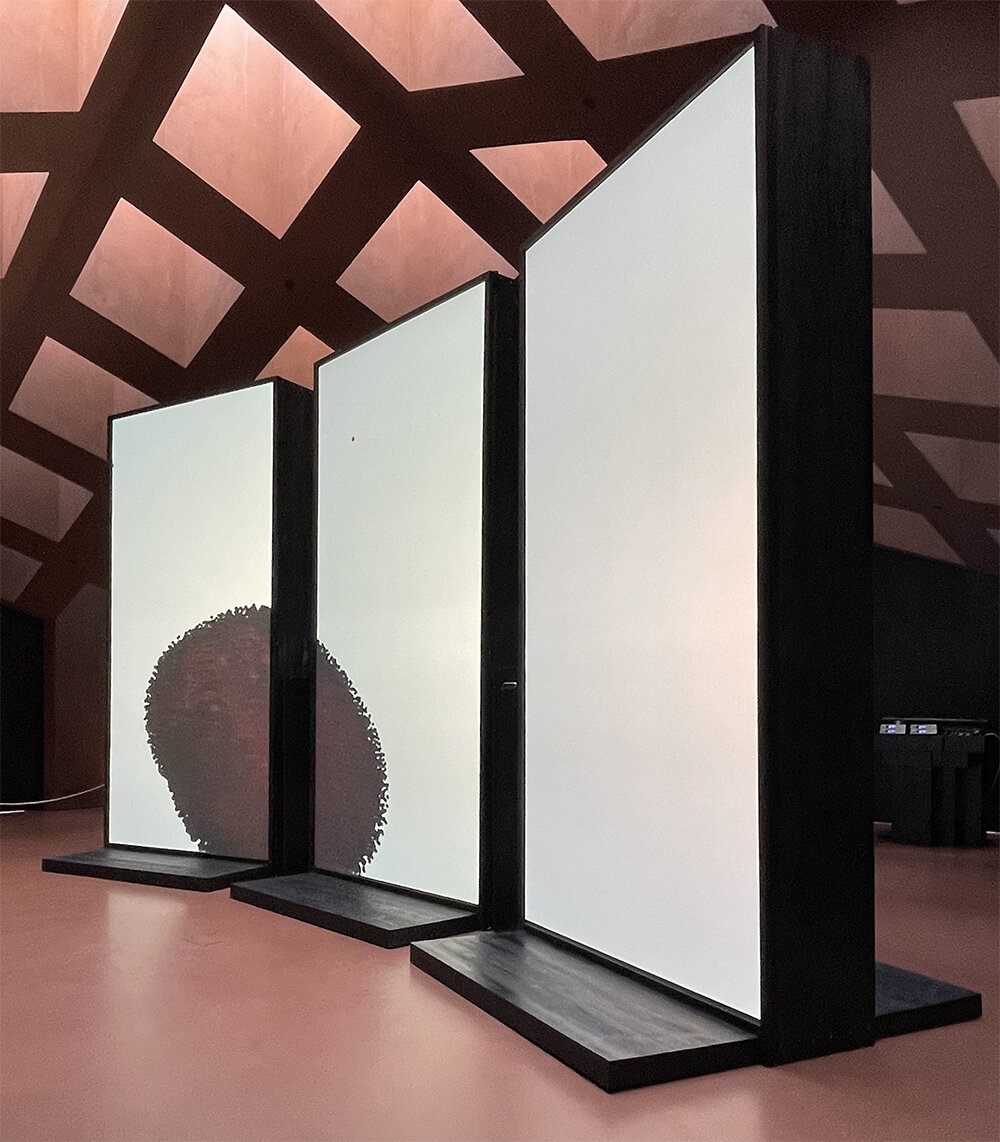
image © designboom
DB: Apart from the artist-led center, how do you see your practice and works evolving in the next few years? Are there specific curiosities, concepts, or ideas you’d like to start experimenting with?
HK: Yes, and it started last year with our mid-career exhibition at the Nxt Museum in Amsterdam, where we revisited our works from the past twenty years; it created a shift. While we were pretty familiar with participative experiences and shared experiences — the idea of encouraging people to actively contribute their creative input into the work itself — we never really clocked it or fully realized what it meant, and that is: to offer agency to our audiences in terms of sharing, truly sharing the creative act. We’re curious to see how we’ll end up developing and opening up that approach even more.
One example is the prints we’ve created and displayed alongside the installation. These represent different ‘moments’ and ‘movements’ of the digital swarm. By physically translating these moments, audiences are offered the choice to pick their favorite ‘snapshot’ and own it. So, in a way, they get to participate in the creation of an artwork. It’s easy to test these things in the digital realm; it’s a medium and tool we all have and are familiar with. But for us, bringing the digital realm into the physical space — in an analog context — is something we’d love to keep experimenting with.
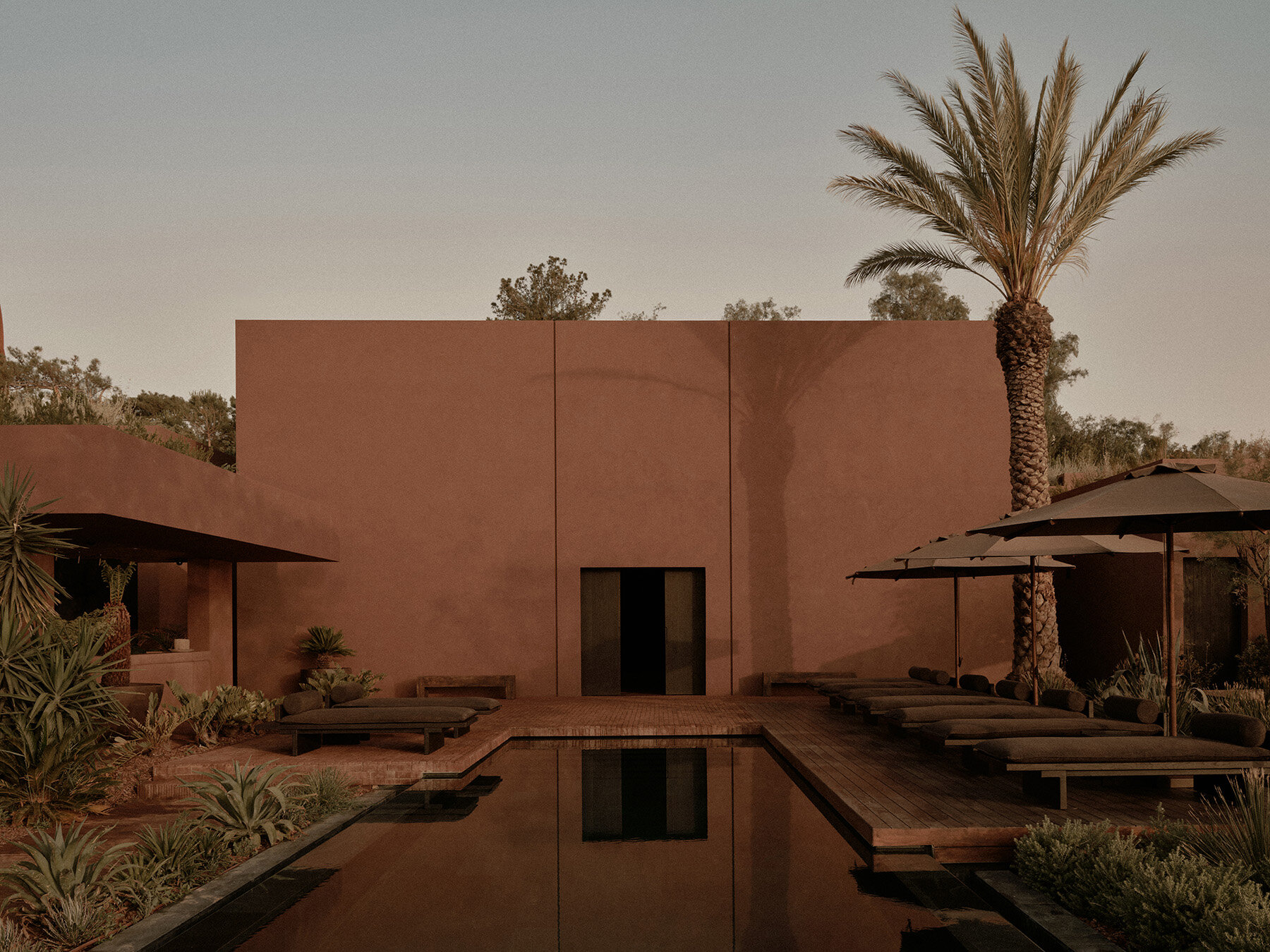
The Ritual Space | image © Georg Roske, courtesy Scorpios Bodrum
DB: Any other dream projects or collaborations in mind?
HK: I find many musical performers fascinating and would love to see how they would engage with a sculpture. We’ve worked with amazing people like Max Richter and Masahiro Hiramoto, but there is something about the human voice that draws me in, and I have a few performers in mind who I think would be insane to work with. It’s delusional, but still, I would love for it to happen. Billie Eilish has an amazing voice. My daughter introduced me to her music (laughs) and now I’m a big fan. For now, though, and more concretely, I think Random International will be mostly focused on developing our artist-led program.
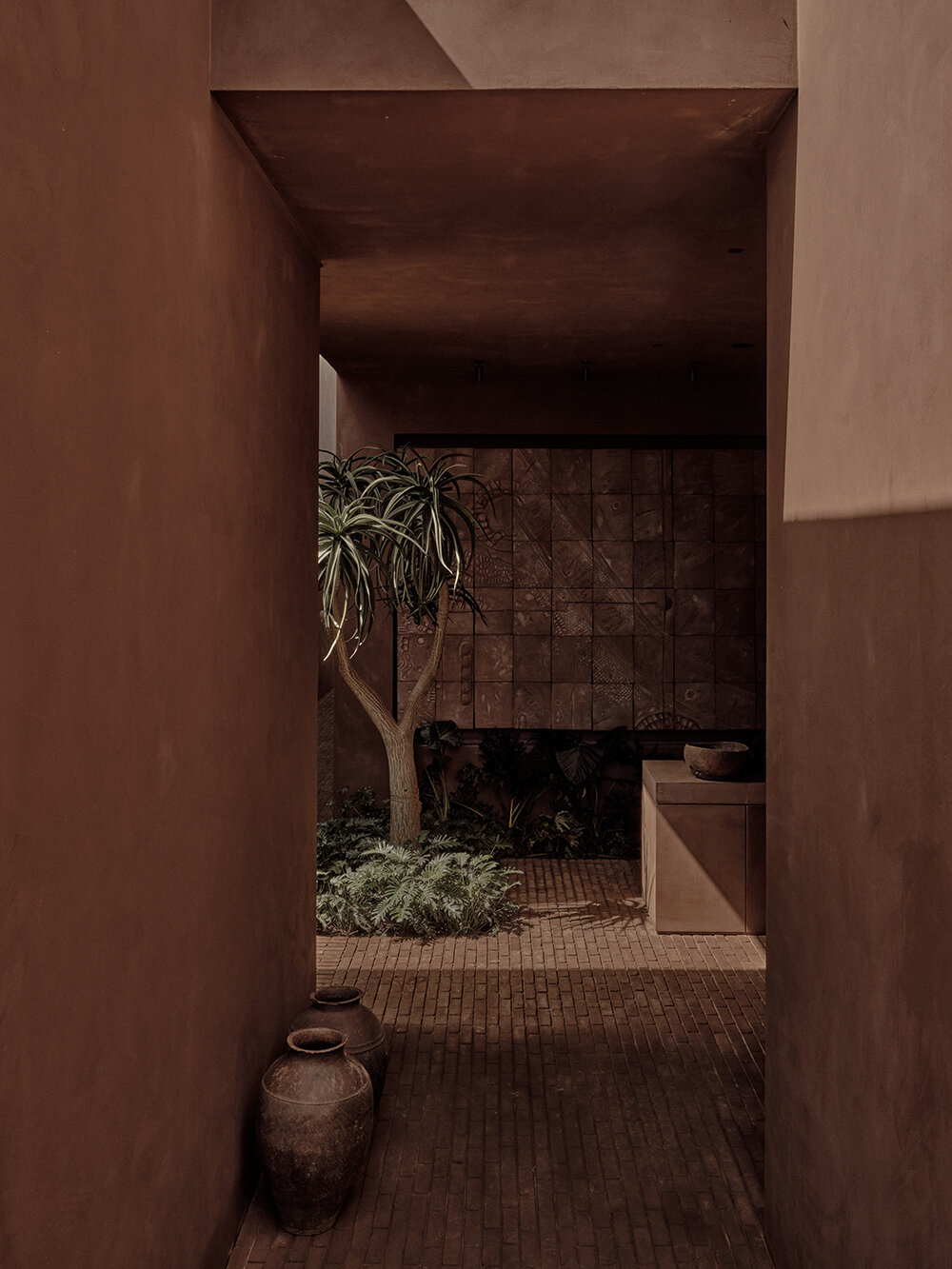
The Ritual Space | image © Georg Roske, courtesy Scorpios Bodrum
Following Random International’s successful show at Scorpios Bodrum, the retreat invited Chinese-Canadian artist Sougwen Chung to share their innovative human-machine drawing practices with the bespoke robotic system, ‘D.O.U.G_5’ (Drawing Operations Unit Generation). The resulting exhibition, Genesis II: Body Machine (Meridians), is uniquely experimental, exploring the relationship between artists and artificial intelligence as a shared, open-ended process. Chung opened with a live performance at The Ritual Space, presenting a series of biomimetic robotic speculations sculpted in air.
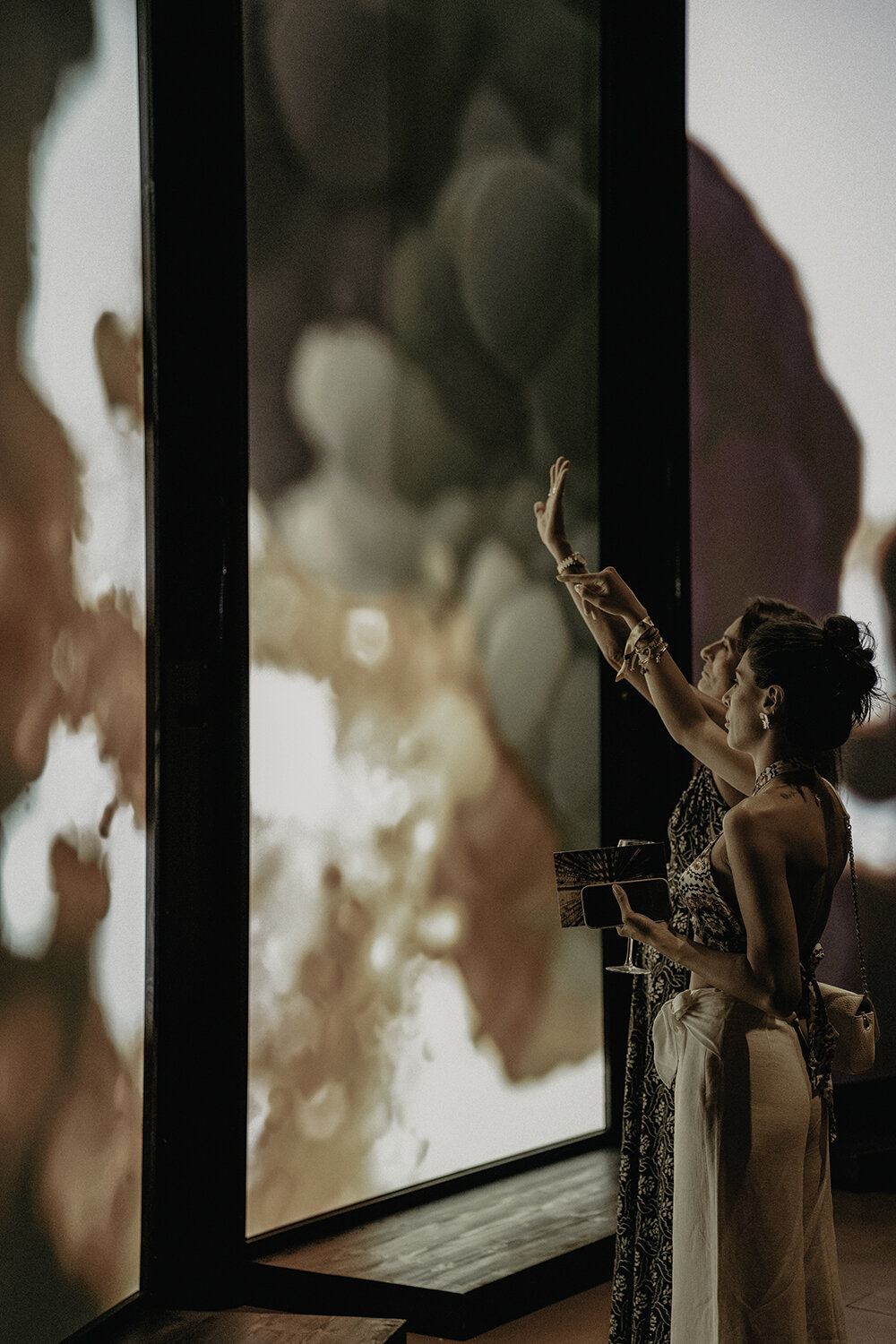
image courtesy Scorpios Bodrum
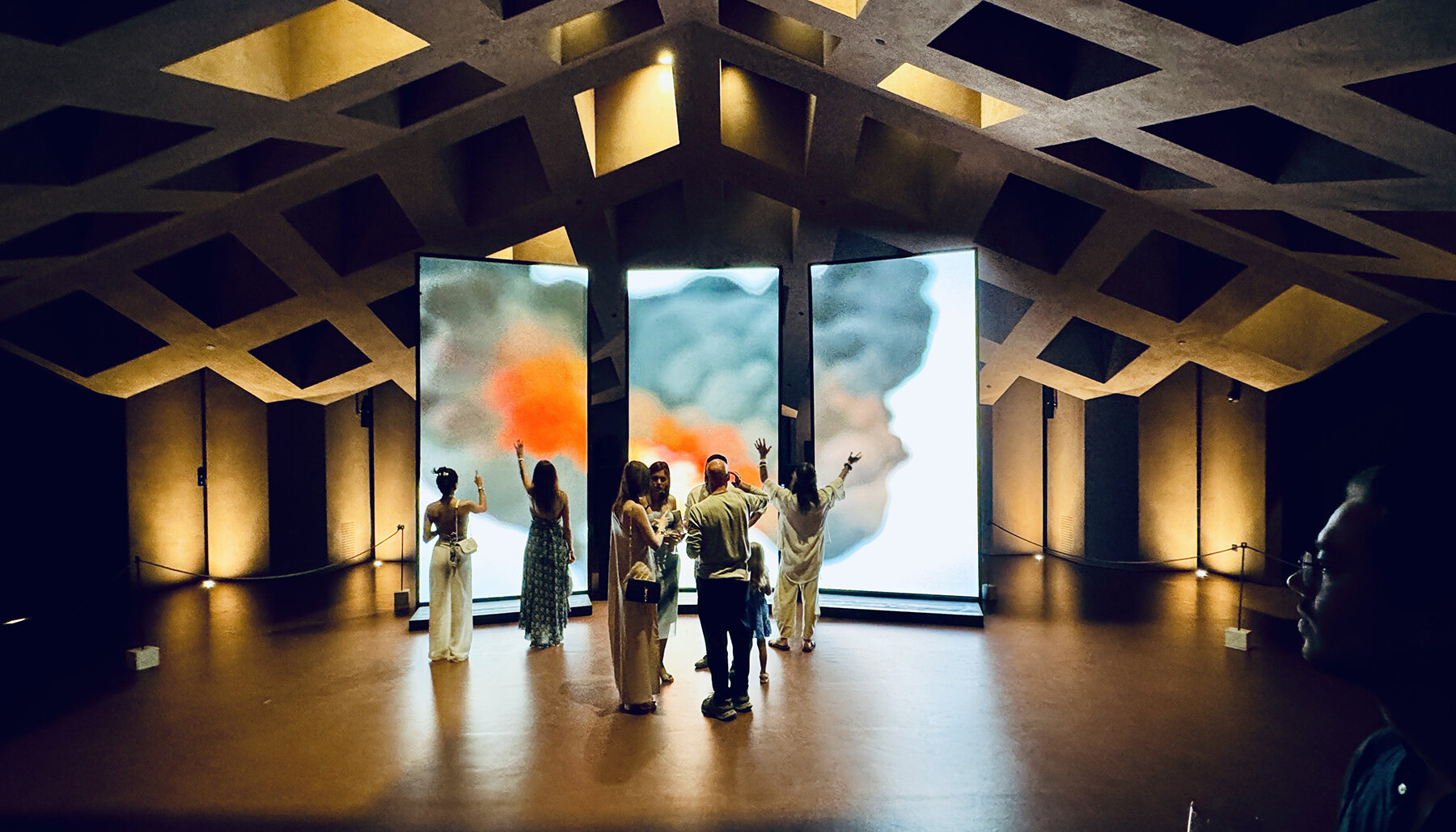
image © Random International
project info:
name: When Tomorrow Comes
artist: Random International | @randominternational
location: The Ritual Space, Scorpios Bodrum, Turkey | @scorpios.bodrum
interviewee: Hannes Koch
curator: HOFA Gallery | @thehouseoffineart
installation music: Masahiro Hiramoto | @masahiro_hiramoto
part of: Encounters Program 2024
viewing dates: August 22-25, 2024
